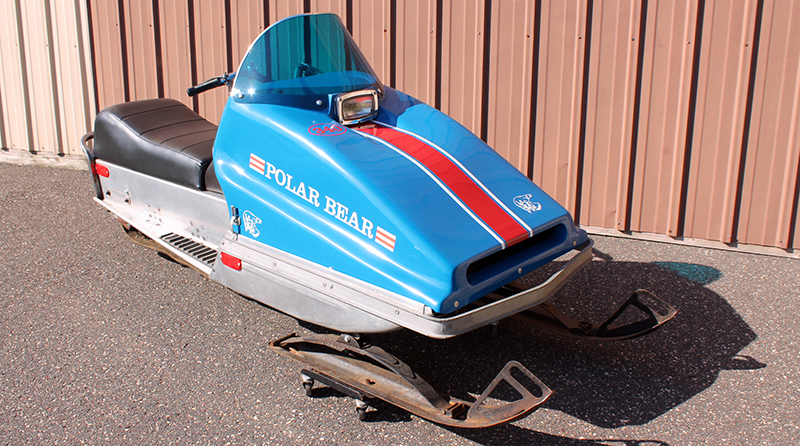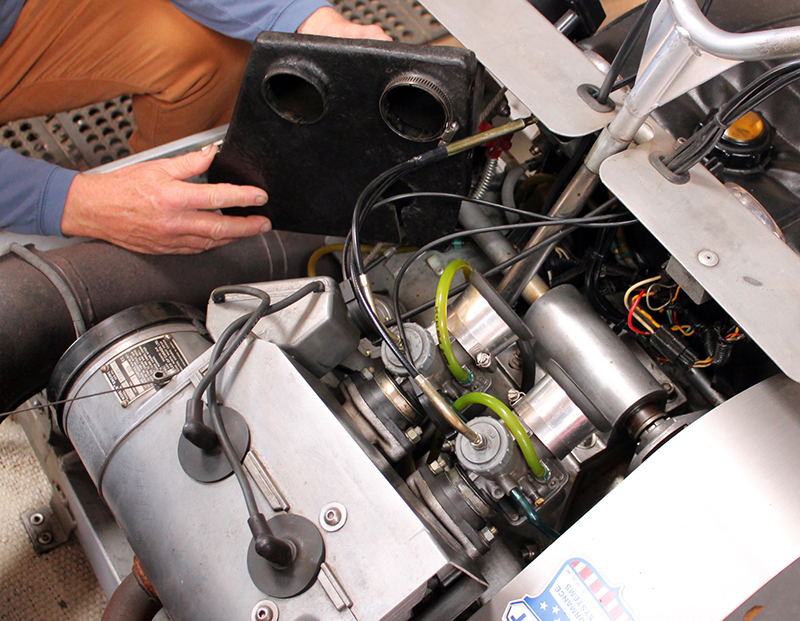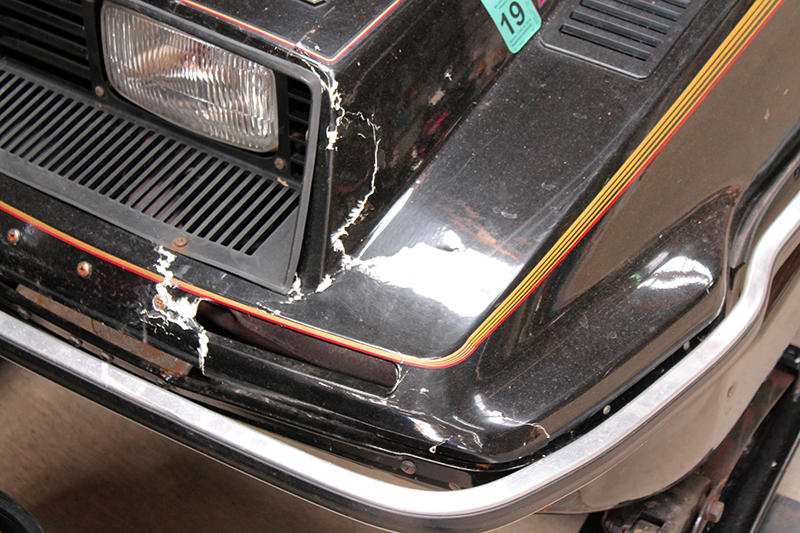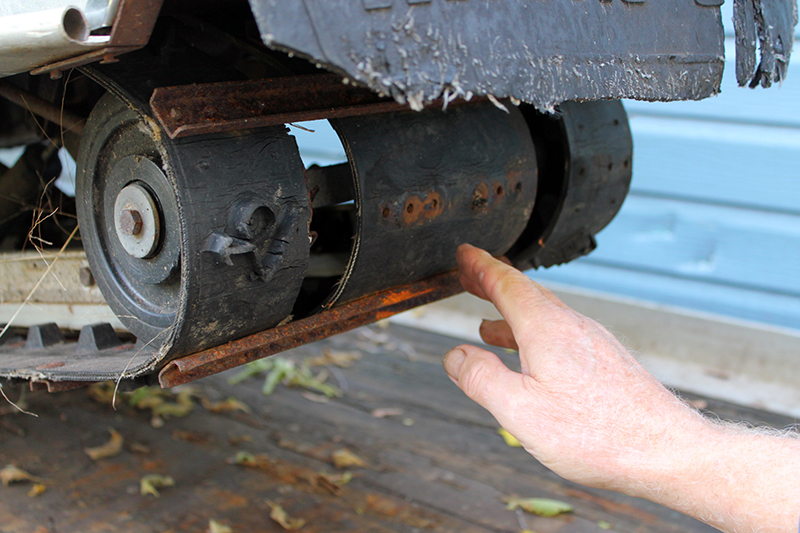Editors Note: This story first appeared in the December 2019 issue of Snow Goer magazine in the Service & Repair department.

By Nick Longworth; with input from Valdi Stefanson, Jeff Oberg, Darren Zamzow and Ron Fesko
For most people, restoring snowmobiles is a labor of love. But as many will learn the hard way throughout their lifetime, even love comes at a cost.
And so the question becomes how does one determine the cost – both time and money – that they’re willing to sink into a given project (or person for that matter), before realizing the risk isn’t worth the reward?
The same logical conundrum goes through the minds of every sled collector each time they see a new potential project sitting on a roadside, offered at a swap meet or posted somewhere online. Maybe it’s the rare find you’ve always wanted, but maybe it’s a three-year headache in waiting.
Antique, vintage and classic snowmobile collecting is popular among many sledheads because it not only allows older riders to recall nostalgic parts of technology, but also affords the opportunity to teach both mechanics and history while incorporating bonding experiences that can be shared among any generation.
With the help of Valdi Stefanson, former president of the Antique Snowmobile Club of America, as well as several other sled collectors and enthusiasts, we compiled a checklist to review when determining which projects to undertake, and which to leave alone. Follow their advice closely, and thank us later.

First Questions/Visual Inspections
One of the most obvious and important initial questions to ask is when the sled last ran, and how it has been stored since then. By inquiring about general condition and knowing how its been stored, you can start to form a clearer idea of what parts might be missing, and what other effort it might take to get it running. This can all be done from the comfort of your home, over the phone.
If the sled was stored outside, you will need to look for rust holes in the chassis where water from both rain and snow could have collected, causing rust and deterioration. Skis can also be rusted on the bottom if not stored properly, such as left on the ground or outside.
“This is a deal-breaker and I won’t waste my time and gas to go and see it [when told it’s been stored outside], unless I am trolling for a parts sled to finish off a project,” said Stefanson, who has amassed more than 65 sleds throughout the last 20 years of collecting.

Fiberglass hoods usually hold up well, but cosmetic issues such as finding a good seat can pose issues and be hard to find, or expensive to repair.
In most cases, a rule of thumb is that the general condition of hood, seat and skis will offer an indication of whether or not the sled has been stored with care or not. In most (but not all) cases, if it looks in “good” shape, it’s been maintained.
Look for initial missing items, such as an air box and belt and clutch covers that are often removed by original owners when making adjustments. Tunnels often deteriorate after years of use, and attempt to identify an original, legible manufacturers tag if at all possible (in the past these were riveted-on aluminum plates, or tin foil tags).
Runner Vs. Show
While “antique” snowmobiles are defined as ones produced in 1968 or older, “vintage” sleds span from 1969 to 1985, and the “classic” class encompasses 1986 to model year 2000, every collector interviewed noted a clear distinction between a “runner” (or a sled that will actively be driven once fully restored) and a show sled (aka “trailer/garage queen”) no matter the era in which it was produced.
A show sled will draw attention and be judged – in this instance seek-out unusual brands or models, including first-year models or big engines and unusual or fad technology. Show sleds offer something special, unusual or desirable and observers always appreciate rarity. Since it will not run, the sled will focus solely on originality and aesthetic restoration.

Whether or not the sled is purposefully fun to ride such as a speed demon from another era, or whether riding would bring back nostalgic memories of the past are factors to consider when making a decision between a runner and a show sled – it’s not an exact science, and there’s considerable variability.
Universal wear items such as belly pans, running boards and skis as well as cosmetic items like hoods, decals and seats will often need to be replaced. However, procuring original manufacturer parts can be difficult depending on the sled and how saturated the market was at the time of the sled’s production – this can be especially true with racing sleds. Parts availability is directly proportional to the number of machines manufactured. Higher production models equates to more defunct dealer stock being bought up by the aftermarket, or reproduction parts being made by aftermarket commercial vendors.
“Manufacturers like Yamaha, Ski-Doo, Arctic Cat or Polaris sold a lot of sleds – there are a lot of collectors for those, and so there’s more parts available,” explained Jeff Oberg, who has collected more than 40 sleds at different times throughout his life. “There are much fewer parts available for the much rarer brands and models.”
“If you’re looking for a runner, steer towards major brands and popular models,” agreed Stefanson. “But focus on performance variants.”
Track Check
Tracks are often fatigue-cracked and weather-checked. Although this is unsightly, it doesn’t necessarily mean that the track is no longer useable.
Discoloration and dirt can be cleaned from a track with soap and water, and then treated with tire protectant to refresh its original black color. Cotton fibers sticking out of the edge of tracks can be burned away with a hand-held propane torch. Be mindful of cleated tracks, and look carefully for broken ones (over time cleats will break and cause under-tunnel damage). Finding and replacing cleats can be a time-consuming and costly process, given the overall condition and year of its production.
Check the condition of the bogie wheels by lifting the machine off the floor and rotating and observing signs of wear or damage. Also inspect drivers on the front axle, as they were often made with plastics that could be chewed-up, or become very brittle. For popular brands, reproductions are available.
Tracks can also be unpredictable – “I have seen good looking tracks break and I’ve seen rough looking tracks keep going,” Oberg noted. In general, treat a track damage inspection like you would the tires of a car.
Suspensions, Shocks And Signs Of Life
Shock and suspension technology has arguably changed more than any other on a snowmobile, and it’s important to keep in mind when the sled was manufactured during an inspection.
Inspect drivers on the front axle – since these parts were often made with plastics that could be chewed-up or often become very brittle. For popular brands, reproductions are often available. Check the condition of bogie wheels by lifting the machine off the floor, then rotating and observing signs of wear or damage, and also that bearings are working (although bearing replacement is easy and inexpensive). Also check to see if the hyfax is worn and needs replacing.
To check the shocks, place the sled back on the ground and push down on the back bumper. Check for oil leaking around where the shaft enters the body of the shock – rust on the shaft is also an indication that the shock won’t last much longer. Also look for broken springs, excessive rust and obviously bent items or stuck shocks.

Inspect the clutches and drive belt – black marks on the side of the clutches or wear on the drive belt can indicate a misaligned motor. Inspect onsite as best you can, but most clutches will need to be taken apart to be properly inspected.
“Any old snowmobile that was well-ridden likely has clutch components that are worn and tired,” said Stefanson. “Owners simply don’t service their clutches often enough, even on modern sleds.”
Inspect fuel delivery system components including the tank, fuel lines, fuel pump and carburetor to determine whether or not there are any breaks or leaks, indicating the fuel lines should be replaced, and carburetor overhauled. At minimum, you can expect to replace the fuel lines and filter.
Check for spark by turning over the engine, and look for any wire insulation damage during inspection. Observe signs of possible mice chewing on wires, and look in locations where wires rubbed off or bending areas where wires may be damaged. With spark and fuel delivery established, a two-stroke engine should fire up relatively easy.
Rotate the engine and listen for any abnormal sounds to indicate crank bearing damage. If the engine will fire, listen closely for signs of distress while decelerating and accelerating. If possible, check for compression using a compression tester.
Cost Considerations
One final consideration to keep in mind is what will be its value to you once the project is completed and what will be the overall expense to get it to its desired state? Both when looking for a sled or parts, remember to simply do your homework.
If you attend swap meets you can visit larger commercial vendors and see what replacement parts they offer, at what price. You can also visit individual swappers that are selling privately once it’s determined they have the part you need. Given a sense of prices and availability, you can then compare your options.
Always carefully inspect each part or sled in person, and never simply accept a sales pitch – the phrase, “it would probably fit your machine” will surely be etched on the tombstone of many collectors. When browsing online, be sure to ask for detailed (and current) pictures. Be weary of Internet scams, and remember the old adage about a deal being too good to be true.
“This is a real issue these days,” said Stefanson. “There is no ‘Kelley Blue Book’ on old snowmobile prices. Recently, I saw a rare part offered for sale, with attached pictures. The part sold, but two days later others had stolen the images and were also ‘selling’ that very same part.”
For many, seeing is still believing.
Final Thoughts
Remember the hobby being a labor a love? That’s not a cliché.
“It’s not a money-maker,” said Oberg. “Determine how much it means to you before making a big investment on time and money. Just like cars – in many cases, you will be ahead in time and money if you buy one already restored. However, that does not provide the personal satisfaction of restoring a sled from your youth, or from your family – you are basically restoring memories.”
Editor’s Note: Every Snow Goer issue includes in-depth sled reports and comparisons, aftermarket gear and accessories reviews, riding destination articles, do-it-yourself repair information, snowmobile technology and more. Subscribe to Snow Goer now to receive print and/or digital issues.

Bonjour
I can by a 1994 Yamaha, V Max 600 DX. The machine seems to be in top shape. Always stored inside. Everything works well. How much should I pay for that kind of snowmobile in canadian dollars? Waiting for your answer.
Bonne journée